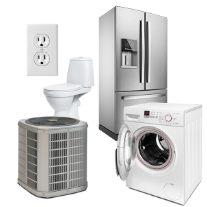How a Cool Roof Helps your Home be More Energy Efficient
A “Cool Roof” is designed to absorb less heat and subsequently keep your house at a lower temperature naturally. The cool roof can help homeowners lower their energy bill during the summer months by creating more energy efficiency. Let’s take a closer look at this dynamic new home technology.
What is a Cool Roof?
Essentially, a cool roof is one that has been designed to absorb less heat than a standard roof, usually by reflecting more sunlight. Cool roofs come in a number of designs. They can be made of a highly reflective brand of paint, a sheet covering, or reflective tiles or shingles. Nearly any type of building can benefit from a cool roof, but houses are a particularly valuable medium for this new development. By comparison, standard (dark) roofs can reach temperatures of 150 degrees Fahrenheit or more during a summer day. A cool roof under the same climate conditions can stay more than 50 degrees cooler, gain energy efficiency and save money by using less air conditioning.
There are many advantages to homeowners who invest in installing a cool roof. They include:
- Reducing utility bills by lessening air conditioning needs
- Improving indoor comfort for homeowners and their families for spaces that may not be air conditioned, such as garages or covered decks.
- Decreasing the temperature on the roof, which may reduce wear and tear and extend the service life of the roof, home and appliances.
- Benefitting the immediate environment by reducing local air temperatures.
- Lowering peak electricity demand, which can help prevent power outages (popularly known as “brownouts,” or “blackouts”).
- Reducing power plant emissions of toxic substances such as carbon dioxide and mercury by reducing energy use in buildings.
Fortunately for homeowners, builders and designers, there are many different options when it comes to cool roof technology.
Cool roof coatings are special reflective or white pigments that better reflect sunlight. They also protect the roof surface from ultra-violet light and chemical damage, while others offer water protection and restorative features.
When deciding whether to invest in a cool roof, it’s important to determine whether the cost will be worth it compared to the energy savings. Your home’s climate, insulation and the efficiency of your heating and cooling system will all be factors in that equation.
If you happen to be building a new home, you can choose during the design phase what type of roof to install. If you want to convert an existing roof, you can either retrofit the roof with reflective material, re-cover the roof with a new surface such as a tile coating or replace the roof entirely.
Cost and Energy Savings
A cool roof can cost the same as a non-cool roof and can be an equitable cost of a home if you are installing a new roof or replacing an existing one. However, converting a standard roof can be a major investment. The cost of roof retrofits can include not only labor and materials, but also repair, recoating and cleaning as well as specialized materials and labor. However, you can mitigate these costs by taking advantage of your ongoing energy savings, rebates and incentives.
Protect your home or your client’s home with an affordable Home Warranty Service Agreement. Visit 2-10.com to find out how a Service Agreement can protect your home or your client’s home from the unexpected.








